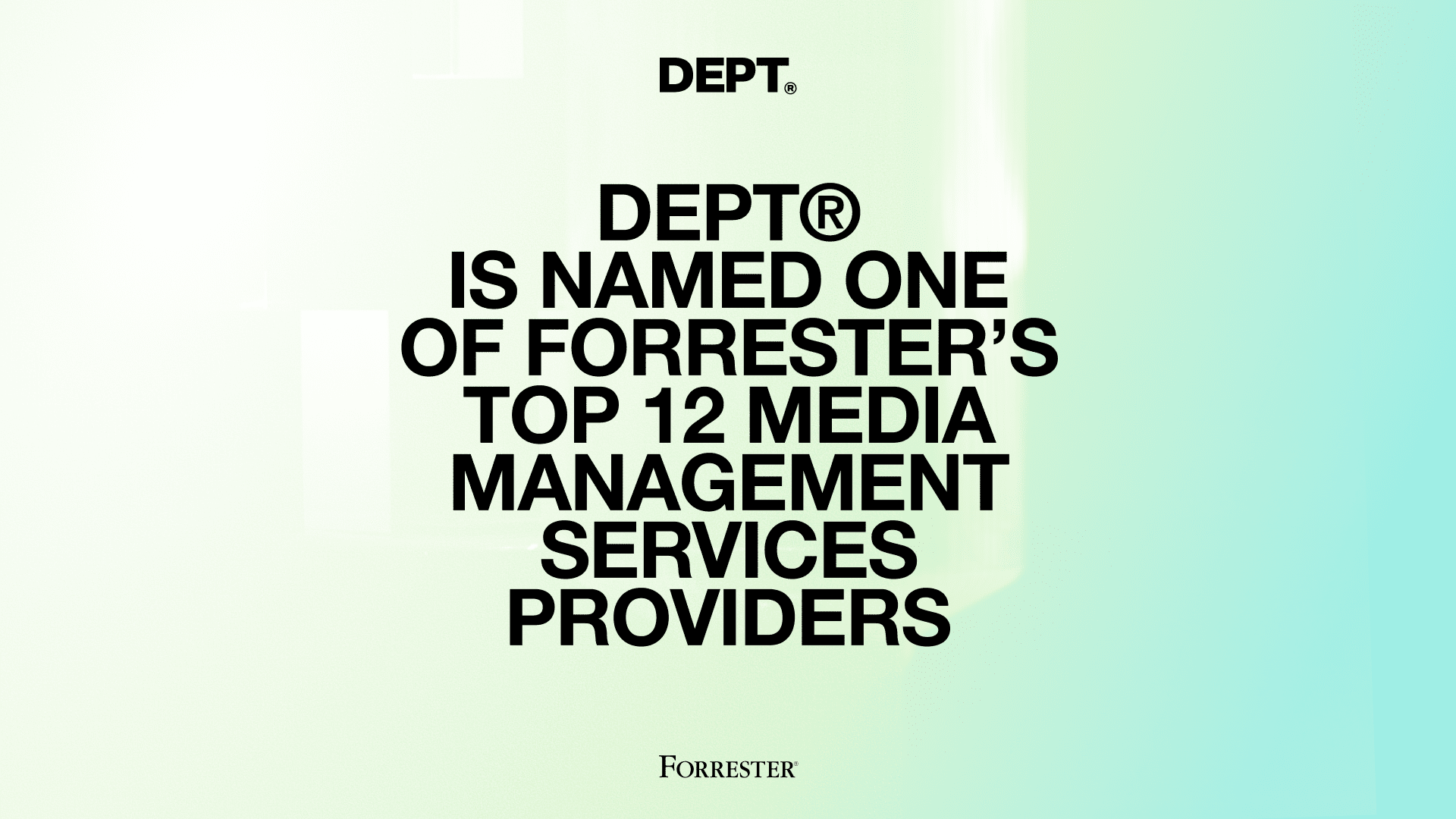Digital marketing is a big part of many companies’ daily business. However, since all things digital are constantly evolving, it can be difficult to keep up even though it is an indispensable part of any business plan. Additionally, changing regulations and IT developments can make navigating this digital ecosystem stressful. However, it doesn’t have to be that way. Below are a couple of the digital marketing trends of 2020. Allowing you to tackle new developments head-on and further future-proof your company.
Personalisation & user experience
Personalisation is no longer simply a buzzword, it’s also not a hype. It’s a consumer demand that’s here to stay. More specifically, the focus is on self-service and the ultimate customer experience. Companies can no longer afford to concentrate on their needs and must instead focus on the needs of their customers. This means offering a friendly user experience, more flexibility and modular models which entails putting together your own product or service completely adapted to your personal wishes.
The ultimate customer experience
To create the ultimate customer experience, marketers rely heavily on data. By bringing together data sources, it’s possible to know and predict behaviour. For example, take the Dutch family-owned shoe business Omoda. The retailer grew at lightning speed and became a major player in the Dutch and Flemish markets with the help of smart digital marketing. The brand collected data pertaining to online interaction and buying behaviour which provided insights that made segmentation possible. Thanks to this information, Omoda was able to predict people’s buying behaviour and divide consumers into different types of persona’s each with different needs. Marketers can use these valuable insights and convert them into actions which can draw in new customers, keep loyal fans satisfied and steer a wardrober (someone who buys a lot, but also sends a lot back) for example, towards qualitative purchases.
Harnessing the power of data
The wealth of information that data gives us can be used to reach the right people at the right time using content that will entice this specific person. For example, there is a customer who will fill their online shopping basket but never buys anything. How can you use this information to convert them into a paying customer? You can try to persuade this person by retargeting them towards a blog about the latest trends, but that’s actually not the information they need at that moment. Thus, a blog has little success in converting them. However, you could provide them with tailored content suggestions to guide them towards the next step without focusing solely on converting them.
Another example is a customer who you know will only make a possible purchase in a few weeks. For this person, you pause your marketing efforts until the purchase date approaches. At which point, you re-activate your campaign and focus on branding and product information. By being present when your customer is ready to buy you increase the likelihood of a sale.
Lastly, it’s better to exclude customers who return many items from your marketing campaigns. You can process that negative turnover in your conversion measurement with Google and Facebook to improve their algorithms. You then offer service-oriented content, such as a size chart, on your site to ensure that consumers have detailed information about your product. Thus limiting the number of returns.
In this way, you effectively translate the collected data about your customers across different platforms with different content concepts. Allowing you to reach your target audience in an integrated manner and create a customer journey that logically connects each step to the next.
The death of cookies
There is no such thing as privacy on the internet – we know everything. But wait, is that really true? As much as marketers want to collect data for personalisation purposes, it’s not always easy to do so. We need cookies to collect data, but to be honest, they are dead. The combination of adblockers, GDPR and Intelligence Tracking Prevention (ITP) are expected to have an effect on twenty to forty per cent of user’s cookies. This will make collecting data considerably more difficult.
Less data to track
Picture a group of internet users in front of you. Roughly 40% of them use an adblocker which makes data tracking nearly impossible. So you can rule those people out. Then there are the increasingly strict GDPR regulations which make it more difficult to collect data about the remaining 60% of the group. Some people also use top of the line ITP that removes all third-party cookies after 24 hours or even immediately. This again consumes a large part of your group of users.
In other words, you have less input but still need to collect enough data to personalise consumer experiences. Therefore, make optimum use of the group that makes itself known and get a higher return from it. How can you do this? By using first-party data. Start by providing an eye-catching cookie bar that visitors can’t ignore unless they leave your website. This can also be done by having someone login. Connect this collected first-party data (from analytics and a CRM software) across different touchpoints, to offer powerful personalisation by means of segmentation, for example. This entices users to share their data because it gives them benefits in terms of experience. The group that you can track is getting smaller and smaller, so it’s up to the digital marketer to deliver with less quality.
The role of the marketer is changing
Robots taking over the world, self-driving cars, Stephen Hawking who predicts that technology means the end of humanity: this is all the spectre of ultimate automation. At the same time, there is still a puppet master. People are still pushing the buttons of robots and feeding the algorithm’s data. It’s true that automation is rapidly taking over the work of marketers, but this technology was largely developed by marketers themselves. However, that does not mean that people become superfluous. The role of the marketer is simply changing.
Driving variables
With every technological revolution that humanity goes through, many professions have to reinvent themselves. This also applies to digital marketers. The work that they are used to doing is no longer tenable. Ever smarter algorithm models are taking over small tasks and can do this without human assistance. So instead of manually optimising campaigns, it’s important to take matters into your own hands and take control of building and controlling the machines that run the models. As a marketer, ask yourself: how can I control those variables?
You dictate the algorithm and the result
Let’s look at bidding on keywords in campaigns. For a long time, people did this manually. Now, this is something which Google algorithms have taken over (smart bidding). But alone, this bidding done by machines is incomplete. Ultimately it’s marketers who are optimising the output and continuously tweaking the algorithm. So they create and control the machine.
Digital natives
Companies must, therefore, make smart use of the knowledge and skills of marketers if they want to become frontrunners. That also means that talented staff who can keep up with these developments are highly desirable. Digital maturity is increasing, but these roles are difficult to fulfil. More and more companies are expanding their marketing department and are arranging everything in-house. Others make smart use of (temporary) digital teams full of digital natives who give your company a digital injection that guarantees your position as a leader; for now and in the future.
The bottom line is: don’t waste valuable time on something that machines can already do. Use the capabilities of smart people and insightful data to best serve your customers. Do not be the person who realises too late that what you are doing is superfluous. Disrupt yourself, otherwise, others will do that for you.
The future starts now
There are numerous cross-sector trends who are just starting to develop, but whose complexity and speed will increase in 2020. While this happens, the role of the marketer continues to evolve as algorithms become smarter and smarter. Marketers will also have to deal with bigger privacy and data hurdles. But let’s not see this as a big thundercloud above our work. These challenges bring forward new opportunities which force us to innovate and drive us to become more relevant. And the latter is precisely the goal of technological and legal developments. Ultimately, it’s all about better service. This makes our work more fun and gives our customers a better experience. A win-win situation all around.
This article was originally published on Frankwatching in Dutch.





